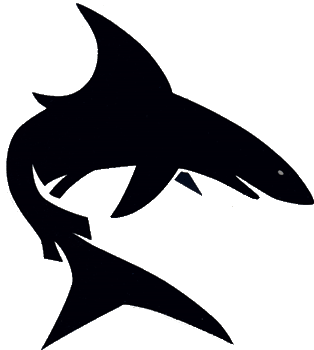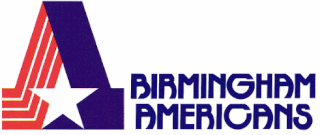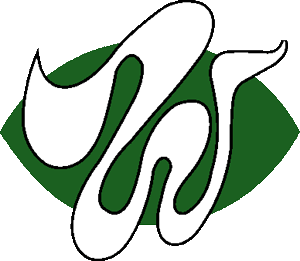
The World Football League (WFL) was an American football league that played one full season in 1974 and most of its second in 1975. Although the league's proclaimed ambition was to bring American football onto a worldwide stage, the farthest the WFL reached was placing a team – the Hawaiians – in Honolulu, Hawaii. The league folded midway through its second season, in 1975. A new minor football league began play as the World Football League in 2008 after acquiring the rights to its trademarks and intellectual property; it folded in 2011.

Simmons Bank Liberty Stadium, originally named Memphis Memorial Stadium, and later Liberty Bowl Memorial Stadium, is a football stadium located at the former Mid-South Fairgrounds in the Midtown area of Memphis, Tennessee, United States. The stadium is the site of the annual Liberty Bowl, the annual Southern Heritage Classic, and is the home field of the University of Memphis Tigers football team of the American Athletic Conference. It has also been the host of several attempts at professional sports in the city, as well as other local football games and other gatherings.

The Memphis Southmen, also known as the Memphis Grizzlies, were an American football team based in Memphis, Tennessee. They played in the World Football League (WFL), which operated in 1974 and 1975. They played their home games at Liberty Bowl Memorial Stadium.
The Charlotte Hornets were an American football team in the short-lived professional World Football League. Despite their brief existence, the Hornets were North Carolina's first attempt at a major league football team, predating the Carolina Panthers by two decades. They were relocated to Charlotte, North Carolina, from New York City in the middle of the 1974 season.

The Jacksonville Sharks were a professional American football team based in Jacksonville, Florida which competed in the World Football League in 1974. The Sharks folded during the 1974 season due to financial difficulties, and were succeeded by the Jacksonville Express which also folded when the league ceased operations during the 1975 season.

The Birmingham Americans were a professional American football team located in Birmingham, Alabama. They were members of the four-team Central Division of the World Football League (WFL). The Americans, founded in late December 1973, played in the upstart league's inaugural season in 1974. The team was owned by William "Bill" Putnam, doing business as Alabama Football, Inc.
The Shreveport Steamer were a professional American football team in the World Football League. The franchise began the 1974 season in Houston, Texas, as the Houston Texans, playing their home games at the Houston Astrodome. Toward the end of the season, the team relocated to Shreveport, Louisiana, and became the Shreveport Steamer. They played at the 30,000-seat State Fair Stadium, now named Independence Stadium. Larry King, of future CNN fame, was one of their broadcasters.

The Birmingham Vulcans were a professional American football team located in Birmingham, Alabama. They were members of the five-team Eastern Division of the World Football League (WFL). The Vulcans, founded in March 1975, played in the upstart league's second and final season in 1975. The team was owned by a group of Birmingham businessmen with Ferd Weil as team president.

John F. Kennedy Stadium, formerly Philadelphia Municipal Stadium and Sesquicentennial Stadium, was an open-air stadium in Philadelphia that stood from 1926 to 1992. The South Philadelphia stadium was on the east side of the far southern end of Broad Street at a location now part of the South Philadelphia Sports Complex. Designed by the architectural firm of Simon & Simon in a classic 1920s style with a horseshoe seating design that surrounded a track and football field, at its peak the facility seated in excess of 102,000 people. Bleachers were later added at the open (North) end. The shape of the stadium resembles the horseshoe configuration of Harvard Stadium built in 1903.

The Chicago Winds was the World Football League's ill-fated 1975 successor to the Chicago Fire. The team was so named because Chicago was nicknamed "The Windy City." The Winds played at Soldier Field and the team was assigned to the WFL's Western Division for 1975.

The Portland Thunder was an American football team in the World Football League based out of Portland, Oregon. When the World Football League was created in October 1973, the Storm was the original New York franchise. When the Boston Bulls merged with New York to become the New York Stars, the original New York entry's draft picks were eventually relocated to Portland. They were the first major league football team based in Portland. They played at then Civic Stadium, now known as Providence Park.

Vincent Francis Papale is an American former professional football player who was a wide receiver. He played three seasons with the NFL's Philadelphia Eagles, primarily on special teams, following two seasons with the Philadelphia Bell of the World Football League (WFL). Papale's story was the inspiration behind the 2006 film Invincible.

Invincible is a 2006 American biographical sports drama film directed by Ericson Core. It is based on the nonfictional story of Vince Papale, who played for the Philadelphia Eagles from 1976 to 1978 with the help of his coach, Dick Vermeil. The film was released in the United States on August 25, 2006.
The 1976 Philadelphia Eagles season was the franchise's 44th in the National Football League (NFL). The Eagles were led by first-year head coach Dick Vermeil. The Eagles matched their 4–10 record from the previous season and failed to reach the playoffs for the 16th consecutive season. It was also the 10th straight season for Philadelphia in which they did not end the season with an above .500 record.
The Seaboard Football League was an American football minor league that operated from 1971 to 1974. It folded during the 1974 season as a result of the founding of the World Football League, which deprived the league of talent.
The 1974 World Football League season was the first season of the World Football League.
The 1975 World Football League season was the second and last season of the World Football League. The 1975 season was to be an 18-game season over a twenty-week schedule.
Robert Owen Majors is a former American football defensive back who played one season with the Cleveland Browns of the National Football League (NFL). He was drafted by the Philadelphia Eagles in the third round of the 1972 NFL Draft. Majors played college football at the University of Tennessee, Knoxville. He was a consensus All-American in 1971. He was also a member of the Memphis Southmen of the World Football League (WFL). He is the younger brother of former Tennessee head coach Johnny Majors.
The 1974 WFL pro draft was the first professional draft of the World Football League (WFL). It supplemented its collegiate draft and included players from the NFL and CFL. It consisted of 480 selections in 40 rounds. Although it was expected that most of the NFL players drafted would have no intention of signing with the new league, the WFL still wanted to have the prominent NFL players future rights assigned, preventing WFL teams from competing in the signing for the same players.
James Henry "J. J." Jennings is a former American football tailback and fullback.












